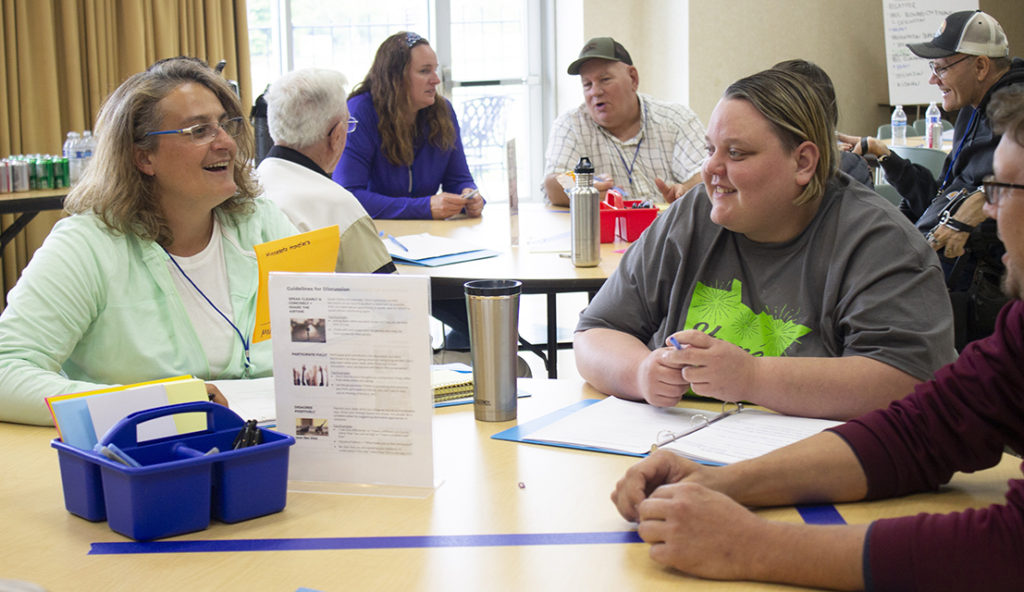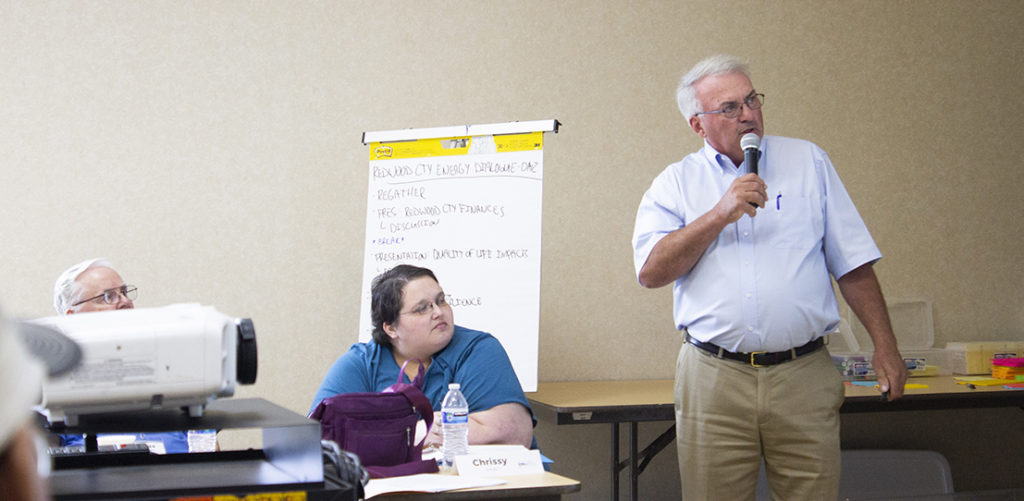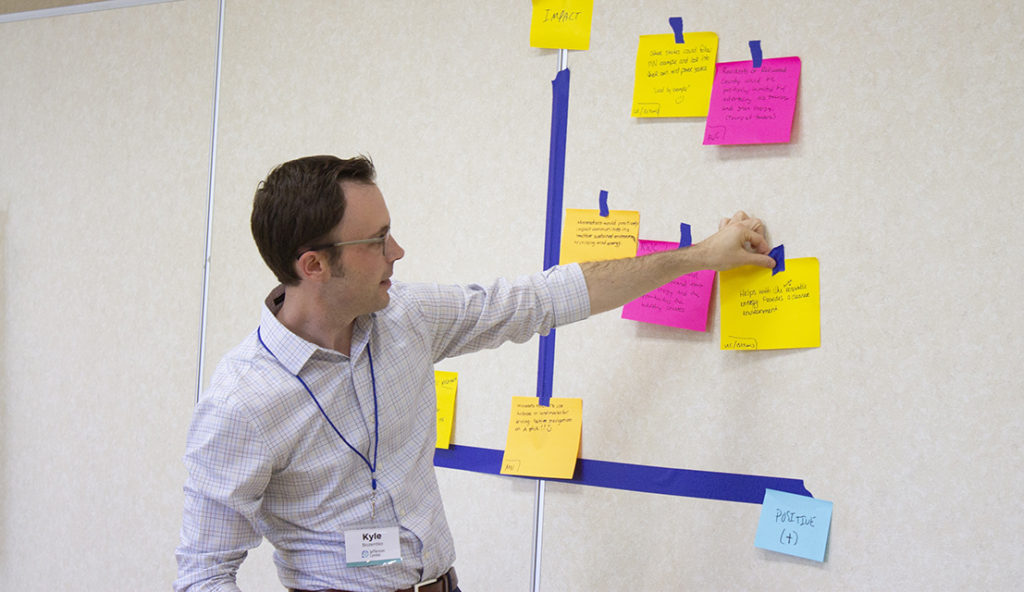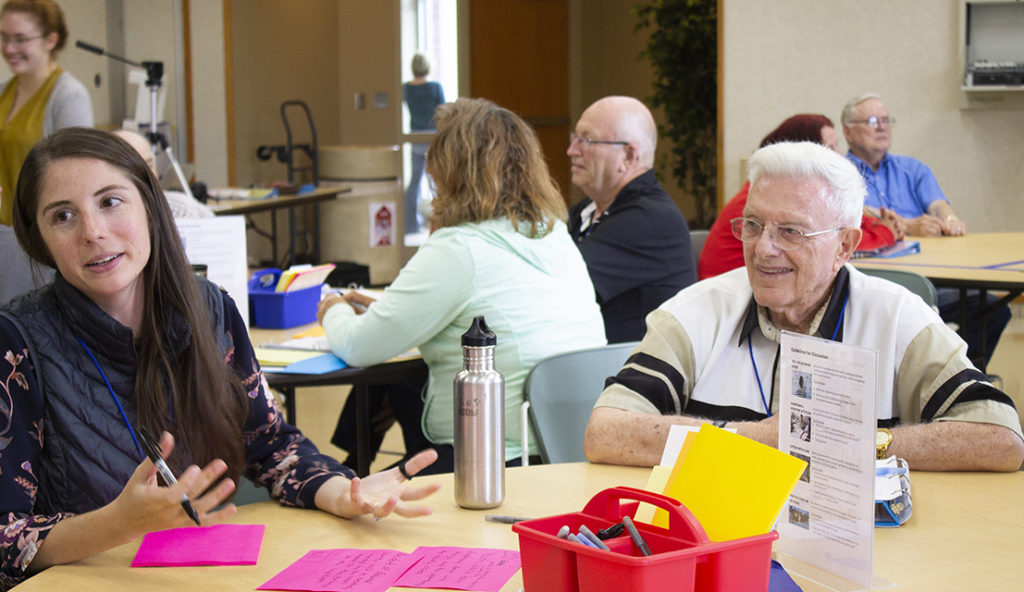Residents of Redwood County love living there – between the strong sense of community, the state’s largest municipal park, and the rich farmland, there’s a solid community identity and sense of place. Recently, something else has started occurring that’s bringing people together: the energy transition.
Places like Redwood County in southwestern Minnesota are on track to house a growing number of wind farms and solar gardens that are coming with the national shift towards renewable energy. The people who live in and love this community want to inform how this transition happens. Many are wondering, how will we benefit from these projects? And how can we make sure our concerns are addressed?
From September 12-14, 18 residents of Redwood County gathered to grapple with these questions at the Redwood County Energy Dialogue. Over the course of two and a half days, participants heard from local and guest speakers, deliberated over what they learned, and created a set of recommendations to inform potential and future wind energy development in the county. In their final statement, they said, “We can see a future in wind energy and are inspired by the possibility of realizing its benefits. It is important [to get] community input since this will directly or indirectly affect all residents. There are many ways for community members to make a difference.”
Who was in the room?
Some participants were drawn to the discussion because they were already pursuing wind development on their land, while others wanted to learn more about the issue or connect with their community. The group represented Redwood County’s demographic makeup in terms of age, gender, ethnicity, education, political affiliation, and more—made possible by a stipend provided to each participant.

To kick off the dialogue, participants went around the room and listed what made them proud to live in Redwood County. Repeated over and over was the “the sense of community” and “good neighbors and friends.” This sentiment was immediately illustrated by the laughter, smiles, and general willingness of the group to listen and connect with one another, no matter what views or prior knowledge they entered the room with.
Hearing from the experts
The first presentation, from Brian Ross, Senior Program Director at the Great Plains Institute, helped get everyone in the room on the same page by exploring why an energy transition is happening in the region in the first place. Markets have shifted so that wind is the cheapest type of energy generation, even excluding subsidies. Because of this shift, states and utilities have committed to change their electric generation to renewables: Xcel Energy has stated it will go 80% carbon-free by 2030 and 100% carbon-free by 2050. Redwood County is located along the Buffalo Ridge of southwestern Minnesota, which has some of the best wind development potential in the country.
Next, participants heard from Vicki Knobloch Kletscher, Redwood County Administrator, who spoke about Redwood County’s finances and decision-making, and helped the participants understand the roles that county government fills and the budget strains that Redwood County currently faces. She stressed that there are many ways for the community to influence the development process, including joining regular board meetings and public hearings. In fact, there are over 100 committees that residents can join. While many participants didn’t know about these opportunities, they left the dialogue with the tools to share their ideas.

Following these two background presentations, participants listened to Shanelle Montana, Senior Project Developer for EDF Renewable Energy, about the potential impacts wind development can have on the quality of life. Her key points included a rise in temporary construction jobs, additional traffic, and heavy construction machinery, which could temporarily disrupt the typical routines of residents.
Rounding out the expert presentations was Gene Metz, farmer and Nobles County Commissioner, who shared an overview of the economic impacts of wind development. He discussed the wind energy production tax, which provided $12.7 million in 2018 to counties across the state. Farmers who host wind turbines also receive a lease payment, which can be a gamechanger for many. But, not everyone receives a lease payment, as participants were quick to point out.
Identifying the biggest challenges and opportunities
After ample discussion, laughter, and debate, the 18 participants identified a set of top benefits and drawbacks for the county to consider when facing potential future wind development.
Top benefits included:
- The annual wind energy production tax that would boost the county’s budget
- Financial gains for landowners
- More money spent locally to create an overall better life for residents
Top drawbacks included:
- A lack of opportunity for local utilities to utilize the power generated by the turbines
- The high cost to increase capacity in the transmission grid
- Potential obstacles to farmers, with possible destruction of equipment and repair costs

Participants also brainstormed a long list of recommendations to maximize the benefits and minimize the drawbacks. The full list of participant-identified benefits and drawbacks, along with their recommendations, can be viewed in the final report.
At the end of the event, participants were also asked to answer the question, “Based on what you’ve learned through this experience, do you feel residents should support expanded/future wind development efforts/projects in Redwood County?”
Here’s how they voted:
Yes, under most circumstances/whenever possible – 56% (10 votes)
Yes, but only if certain conditions are met/put in place – 44% (8 votes)
No, not under any circumstances – 0% (0 votes)
What happens now?
The Redwood County Energy Dialogue kicked off a new wind development focused series of the Rural Dialogues program. These dialogues, conducted by the Jefferson Center and the Institute for Agriculture and Trade Policy, offer new and unique opportunities for Great Minnesotans to make their voice heard on the future of local energy. At the end of the event, one person shared,
“I came into this not knowing one bit of information, so this has been an eye-opening experience. I feel a lot more informed now in terms of communicating information to others.”
Wind energy has turned into a divisive topic in many communities, made worse by a general lack of engagement opportunities for people to discuss their hopes and concerns with one another. We believe it’s key that community members are front and center in conversations about issues that will impact them directly. We’ll continue working with IATP and local partners to share the community recommendations, and identify resources to turn them into action.



